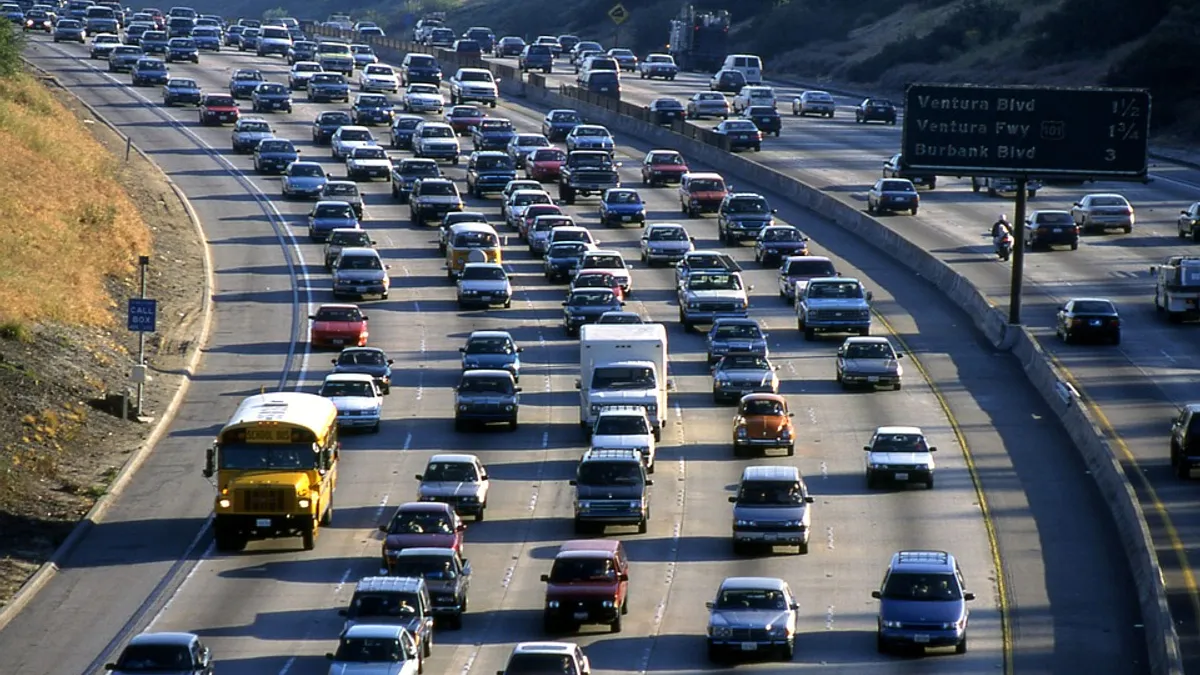Dive Brief:
- Cities should partner with state and regional governments to explore a road user charge (RUC) system that could replace or supplement the gas tax, according to a new report from the National League of Cities (NLC). Budget concerns and enforcement mean such systems are likely best executed at a state level, but local leaders can play a “significant role” in getting them off the ground.
- A RUC, like Vehicle Miles Traveled (VMT) tax or Mileage Based User Fee (MBUF), would charge drivers based on their use of a road, either through manual odometer readings or onboard tracking technology. Those systems are seen as a potential replacement for what NLC says is the current “broken funding model,” which relies on gas tax revenue.
- Although cities will have difficulty enforcing RUC models on their own, the report notes that they can draw on them to implement a congestion fee or other usage price mechanisms. Funds can then be used to pay for fixes to infrastructure.
Dive Insight:
The 18.4 cents-per-gallon federal gas tax is not indexed to inflation and has not been raised since 1993, putting a significant strain on federal transportation coffers. According to the Congressional Budget Office (CBO), the Highway Trust Fund, which sends money to states for road and transit projects, is set to run dry by 2022. Many states have raised their own gas taxes to make up for the shortfall — Alabama, Ohio and Michigan are among the states considering tax increases this year — but experts caution that the gas tax may be unsustainable.
More fuel-efficient cars and the increased adoption of electric vehicles (EVs) has also hurt gas tax revenue, as drivers add to the wear and tear on roads while avoiding the gas tax. NLC also notes that, with more mobility options available, planners need to “consider how transit, shared rides and new micromobility options like electric bikes and scooters should be charged to use the roadways.” That’s led to increasing conversation around a RUC, which would charge users more fairly and could open up more dynamic funding streams, like congestion pricing or higher fees for certain types of vehicles.
Some states have already begun experimenting with their own RUC systems. Oregon has successfully run multiple pilots that charged users by the mile, becoming a model for other interested states. Led by Delaware, a coalition of states along the I-95 corridor is exploring a mileage fee pilot, and states including Washington and California are working on their own pilot programs. Local officials have been involved in those efforts — in one of Oregon’s tests, a surcharge will be assessed to people driving in and around Portland to address urban congestion.
RUC models come with concerns about surveillance and the high up-front cost of implementation, but surveys have shown people would pay more for infrastructure. An October survey from civil engineering firm HTNB found that 70% of Americans would be willing to pay higher taxes and tolls to support infrastructure maintenance or new construction, with support rising to 82% if the money was guaranteed to be for infrastructure.











